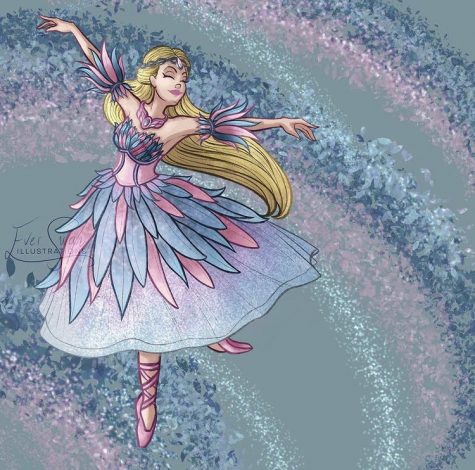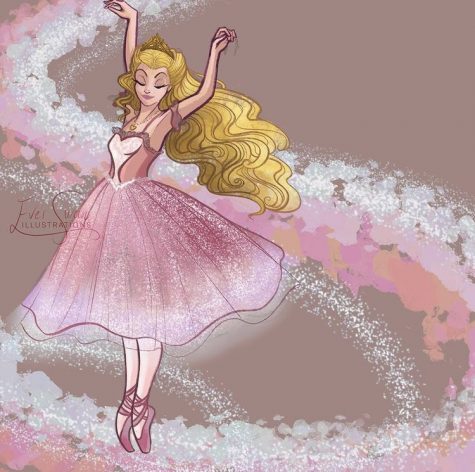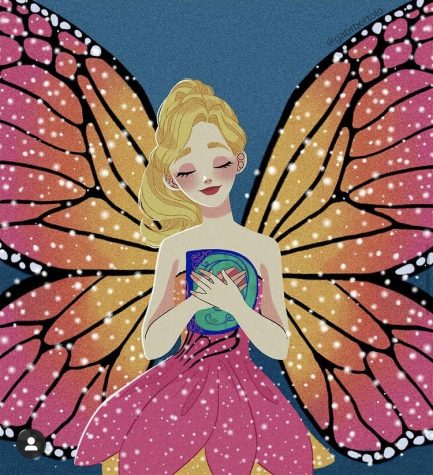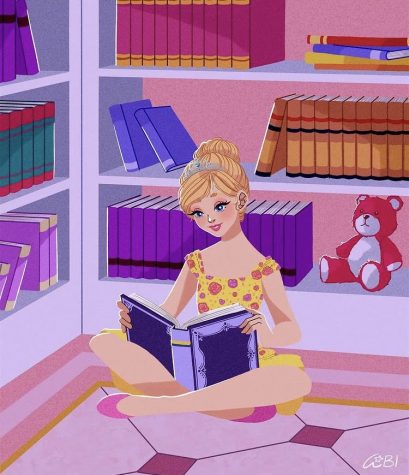The Forgotten Feminist Icon: An Argument for Barbie
Mattel’s iconic character Barbie has been dismissed as a feminist for years, with many failing to see the empowerment that she brings to young children, especially girls.
Here is the third piece in Ever Swan Illustration’s trio of Barbie artworks, showcasing “Barbie as Rapunzel.”
Barbie is a household name, even for those who never owned the doll. Known for her iconic blonde hair, blue eyes, bikini-ready body, and love for fashion, Barbie has been the face of the toy industry for 60 years. Mattel has sold over 1 billion dolls since her debut, but the toy company has struggled to withstand the test of time as our societal norms have changed.
Barbie has as many critics as she does fans. She’s been at the center of numerous controversies regarding her lack of diversity, promotion of unrealistic body standards, and reinforcement of a sexist mindset. Through speech, tabloids, and movies, society has rebranded her into a conventionally attractive woman who lacks personality and intelligence, to the point of being a sex symbol. Songs like “Barbie Girl” by Aqua belittle her as a mere “play-thing” that will bend over backward at a man’s will. On the other hand, “Not Your Barbie Girl” by Ava Max is a revamped version that rejects Barbie in direct contrast to a strong, independent woman. Both songs carry negative connotations with one objectifying her and the other excluding her from the definition of success. Granted, while Max’s “Not Your Barbie Girl” is a song that celebrates the “girl boss” in every woman, she is still portraying Barbie as a pushover.

However, it is unfair to discredit Barbie so quickly without considering what she truly stands for. Her slogan has always been “You Can Be Anything,” and the company doesn’t take this statement lightly. Since her release, Barbie has held over 200 jobs, including doctor, astronaut, and computer programmer. One can even argue that she has constantly been progressive beyond her time: Barbie ran for President in the 90s before a woman had ever made it onto the ballot. She inspired generations of girls to work in male-dominated fields.
Another commonly held belief is that Barbie represents an unattainable beauty standard. However, it is ironic that the people who shame the doll for this focus more on her body than her various careers. There’s a misconception that women have to renounce their sexuality in order to be taken seriously in the workforce, but Barbie teaches her audience that they can be attractive and still have a serious job.

Perhaps Barbie’s easiest target point is her blondeness. This originates from Hollywood, which popularized the idea of the “dumb blonde” through films like 1931’s “Platinum Blonde” and 1933’s “Bombshell.” These movies’ blonde characters are represented solely as sex symbols with charmingly empty brains. The many blondes who dominated the cinema in the mid-1900s, like Marilyn Monroe, pushed this stereotype further. They were perceived to be femme fatales while the brunettes were sweet, studious, and hard-working. This stereotype can even be seen in the films of today with “Mean Girls” and “High School Musical,” in which the blondes are always the antagonists. Their wealth, good looks, and popularity make others covet their position but also dehumanize them.
The characters also share the likeness of being “too feminine,” obsessed with their appearance, the color pink, shopping, and the sought-after male lead. By subtly villainizing these girls, we get the conception that femininity is evil and is a trait that will ultimately be punished in the end.

Ginette Vincendeau, a film studies professor at the King’s College London, writes in “Introduction: the ‘Blond Issue,’” “Blondness raises another paradox regarding femininity – it suggests something inherent to female sexuality (being a ‘blonde’ is an identity), and at the same time it is the mark of artificiality, the sign of glamour, a concept that in itself implies a high degree of construction […] In other words, blondeness is always a cultural construction, but one that is somehow meant to hint at the essence of femininity, in a way that other hair colours do not.” These stereotypes are toxic to women and force them to choose between femininity and being taken seriously. But Barbie, along with films like Legally Blonde and 2019’s Bombshell, seek to break this trope.
One must realize that Barbie can not shoulder all the blame for societal ills, and it is up to good parents to teach their kids that she is simply a doll. We should start asking ourselves if the doll would cause such effects if adults were not so keen to point out the possibility.
Contrary to popular belief, Barbie is an extremely nuanced character. The Barbie movies capture her unique qualities while simultaneously revealing hidden truths about the human condition. The second-ever-released film of the franchise, “Barbie as Rapunzel” is a prime example of this. Created before Disney’s famous 2010 “Tangled,” the film is Mattel’s take on the classic Brothers Grimm fairytale.

In this version, Barbie plays Rapunzel as a maiden with ankle-length hair. She is a servant to the witch Gothel and lives in a secluded manor, guarded by a magical wall, with no freedom to visit the outside world and no outlets of expression other than painting. Unbeknownst to Gothel, Rapunzel finds an enchanted paintbrush with the ability to create portals until the witch inevitably destroys it and tries to kill the prince she met in the marketplace by impersonating her. But thanks to Rapunzel’s quick thinking, the witch becomes a prisoner to her own spells.
While this may just seem like a typical cheesy children’s princess film, there are several complex underlying themes within it. To start, Barbie does not rely on a strong man to rescue her. This is an outdated cliche used in many female-focused movies, and while there is nothing inherently wrong with receiving help from men, she relies on herself to escape. When she first meets Prince Stefan, she does not recognize him as a powerful figure. Rapunzel does not seek out a man, nonetheless a prince, but rather dreams of freedom. Even with the introduction of Ken as Barbie’s boyfriend, she still took center stage while he is a mere support. Therefore we can reject the sentiment from Aqua’s song that Barbie is a bimbo who takes orders from Ken.
Another criticism is that Barbie is weak because she enjoys fashion and obsesses over the color pink. However, this statement invalidates women who are more traditionally feminine. A woman does not need to be “manly” in order to be strong; this contradicts the very idea of being a feminist and is responsible for breeding toxic masculinity. People are often quick to dismiss inner strength, forgetting that compassion and honesty are just as valuable as traits such as assertiveness.
In the movie, Barbie’s compassion, honesty, and kindness, not the prince, are what ultimately save her. She always protects her animal friends, one example being when she sacrificed her chance for freedom to rescue the baby-dragon’s father. Ultimately, her honesty and desire to protect others are what free her from the tower because the same animals she saves help her to escape. The underlying message of the movie is that being kind and possessing a good heart is not synonymous with being weak. In spite of the abuse she faces at the hands of Gothel, she never betrays her morals and is selfless.
This is not to say that Barbie-Rapunzel possesses no “masculine” qualities: she is certainly brave and adventurous. When she discovers a secret passageway to the village, she does not hesitate to explore, despite being unaware of what lies ahead. She also wastes no time saving a little girl from falling into a trench, even though she almost fell in herself.
The films clearly tell a different story than those pushed by critics, so at the end of the day, we realize that Barbie has always been a feminist icon, evident by her decade-old occupations. To many little girls, she instills them with the creativity and imagination that is hard to teach traditionally.
Ginette Vincendeau, a film studies professor at the King’s College London, writes in “Introduction: the ‘Blond Issue,’” “Blondness raises another paradox regarding femininity – it suggests something inherent to female sexuality (being a ‘blonde’ is an identity), and at the same time it is the mark of artificiality, the sign of glamour, a concept that in itself implies a high degree of construction…”
Nicole Zhou is the Editor-in-Chief for ‘The Observatory' yearbook and a Staff Reporter for 'The Science Survey' newspaper. This is her third year revising...

